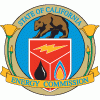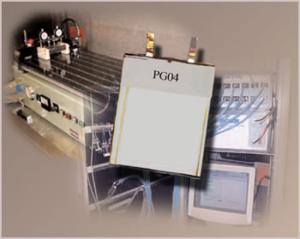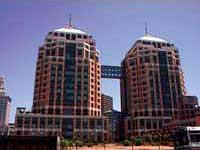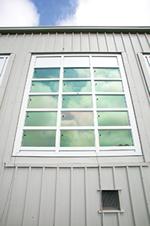News

April 15, 2004
How can an energy-efficient, pinpoint light source best light up a room, or a part of one? That was the question recently asked in a five-week-long lighting-design class offered by the Department of Architecture at the University of California at Berkeley....
Read more

April 6, 2004
The California Energy Commission's Public Interest Energy Research (PIER) program is launching a Demand Response Research Center led by Lawrence Berkeley National Laboratory....
Read more

February 25, 2004
A unique cell development program has been under way in Berkeley Lab's Environmental Energy Technologies Division (EETD), led by Kathryn Striebel. The project uses standardized cells to assess, in a working battery, the performance of promising new materials. It aims to bridge the gap between materials research and commercial battery development....
Read more

February 18, 2004
The New York Times Company and Berkeley Lab's EETD have begun a cooperative research project to test new technologies to increase the energy-efficiency of the new building and to improve the indoor environment for the comfort of its occupants....
Read more

February 11, 2004
Researchers at the Department of Energy's Lawrence Berkeley National Laboratory have completed the first successful test to evaluate automated demand response at five large building facilities. Demand-response technology manages electrical use in the buildings over the internet, whenever high prices, blackouts, or overloaded electrical demand threaten the power grid....
Read more
February 9, 2004
Researchers at Lawrence Berkeley National Laboratory said last week they have wrapped up a successful trial run of an Internet-based system designed to avoid blackouts and help large electricity users cut their bills — without utility operators or building managers having to lift a finger....
Read more
February 2, 2004
BERKELEY, CA Researchers at the Department of Energy's Lawrence Berkeley National Laboratory have completed the first successful test to evaluate automated demand response at five large building facilities. Demand-response technology manages electrical use in the buildings over the internet, whenever high prices, blackouts, or overloaded electrical demand threaten the power grid....
Read more

January 20, 2004
"To get to Mars, we need to develop a fully regenerative life-support system," says Ted Chang, a senior scientist in Berkeley Lab's Environmental Energy Technologies Division who led the research. The key may be wheat....
Read more

January 14, 2004
Researchers in Lawrence Berkeley National Laboratory's Environmental Energy Technologies Division (EETD) recently finished field-testing a "relocatable" classroom of their own design, intended to save energy and provide good indoor air quality. This last in a series of Science Beat articles on energy-efficient buildings looks at how energy costs can be reduced and air quality can be improved in...
Read more

December 9, 2003
This web site is designed for middle and high school students, their teachers and their parents. Students use the web-based Home Energy Saver (a "virtual laboratory" for studying energy use and savings in the home) to conduct energy efficiency audits. HES in turn accesses a sophisticated computer model, called DOE-2, developed by scientists at the Lawrence Berkeley National Laboratory. The site...
Read more

November 11, 2003
Developing internet-based control systems to improve the energy efficiency of buildings is one of the key elements of the recently concluded High-Performance Commercial Buildings Systems (HPCBS) research program funded by the California Energy Commission....
Read more

October 13, 2003
Commercial buildings in California are beginning to use less energy, thanks to a major energy-efficiency research program based at Lawrence Berkeley National Laboratory, recently completed....
Read more

September 17, 2003
The Advanced Window Systems Test Facility was built to test new window technology that will increase energy savings and occupant comfort....
Read more

September 10, 2003
Within hours of the August 14 blackout, researchers throughout the U.S. in the Consortium for Electric Reliability Technology Solutions (CERTS) began mobilizing resources to help the U.S. Department of Energy find an answer. Among them is Berkeley Lab's Joe Eto of the Environmental Energy Technologies Division, who overnight became a much sought-after expert on the subject....
Read more

July 16, 2003
The Consortium for Electric Reliability Technology Solutions (CERTS) was formed in 1999 to research, develop, and disseminate new methods, tools, and technologies to protect and enhance the reliability of the U.S. electric power system and functioning of a competitive electricity market....
Read more

July 15, 2003
Within hours of the August 14 blackout, researchers throughout the U.S. in the Consortium for Electric Reliability Technology Solutions (CERTS) began mobilizing resources to help the U.S. Department of Energy find an answer. Among them is Berkeley Lab's Joe Eto of the Environmental Energy Technologies Division, who overnight became a much sought-after expert on the subject. A unique type of...
Read more

July 9, 2003
Industrial research at Lawrence Berkeley National Laboratory covers a wide spectrum of practical applications. Berkeley Lab researchers work closely with representatives from many industries to analyze and improve industrial processes....
Read more

June 25, 2003
EETD's Indoor Environment Department has developed a new web site on commercial buildings, showcasing results of recent research concerning ventilation and indoor air quality. The audience for this web site is building managers, architects, and other building professionals....
Read more

June 17, 2003
The World Technology Network has announced that Lawrence Berkeley National Laboratory's Environmental Energy Technologies Division has won the 2003 World Technology Award for Energy, in the corporate category. The awards honor individuals and corporations from 20 technology-related sectors selected by their peers as being the innovators doing work of the greatest likely long-term significance....
Read more

June 6, 2003
R&D Magazine has announced the winners of the 41st annual R&D 100 Awards, honoring the 100 most technologically significant new products of the year. One of the 2003 awards, which have been called the "Oscars of Invention," has gone to a technology developed by scientists at Berkeley Lab's EETD and their collaborators: the EnergyPlus Building Simulation Program....
Read more

June 4, 2003
Billions of dollars could be saved by improving the power management interface on computers, monitors, copiers, and other office equipment....
Read more

June 2, 2003
EETD works with America's communities through the Department of Energy's Rebuild America program....
Read more

May 21, 2003
Berkeley Lab researchers invent an aerosol duct sealing system to reduce energy loss in large commercial buildings....
Read more

May 19, 2003
With the help of technical advice from EETD's China Energy Group, as well as experts from other institutions around the globe, energy efficiency is playing a larger role in China's energy plans....
Read more

April 15, 2003
A new web site describing Berkeley Lab's capabilities in the area of sensor technology development for industrial applications is now online....
Read more